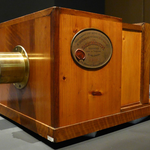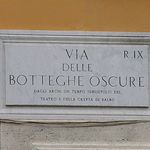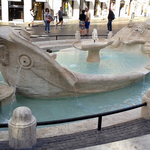Basilica di San Pietro in Vaticano
It was Constantine the first Christian emperor that in 326 ordered the basilica dedicated to the Apostle to be built on the site of San Pietro's martyrdom.
After year 1300 the basilica fell to pieces and in 1447 pope Nicola V proclaimed for to develop the "faith" it is necessary to satisfy an eye and he gave an idea to build a new spectacular Basilica, but only in 1506 Giulio II made up his mind to give an order to Bramante which demolished everything with big vehemence and accomplished only 4 big pillars of his project that were very important for the future projects.The jobs lasted 126 years.
In 1546 Michelangelo was called by Paolo III to work on the site. In that time Michelangelo was 72 years old and he accepted the order "for penance" leaving the cupola unfinished at his death. Pope Urban VIII speeded up the construction. 800 persons were working over days and nights and in 1626 the Pope could consecrate the basilica already furnished and enriched by his favourite artist Bernini. The date was the same as Constantine had consecrated the first Basilica 13 centuries before, November 18.
It is the biggest church of the world where more than 20 thousand persons can pray.It is 193 meters long, 132 meters high and it occupies 22 thousand square meters. 13 statues of the façade each of 5,70 meters high
represent Jesus, Giovanni Battista and the apostles except San Pietro.
Two side watches were created by Giuseppe Valadier in 1795. In the interior 148 columns support the high ceilings of 44 meters high. The statues inlaid in four central pillars are huge: 5 meters each while the putti supporting the holy water stoups are 2 meters high. In the church beyond the Bernini's Baldacchino which is as high as Farnese Palace there are 29 altars and the tombs of 147 popes. On the walls there are no paintings but only mosaics. Besides there are naturally marbles and golds.
Consecrated in 1626, the Basilica has been continuously enriched and improved by totally 19 pontiffs following one another beginning from Giulio I up to Urban VIII who during 120 years personally followed the construction. Everything is so huge and extraordinary that Byron's advice "to break the contemplation of the big set into little parts" is valid untill nowadays.
The part of the "lion" in the furnishings of the Basilica was created by Gianlorenzo Bernini which was a protégé of Maffeo Barberini for 20 years since the last one had become Urban VIII. "If Gianlorenzo doesn't tuck up
a blanket the Pope won't fall asleep". "The passion" of Urban VIII for Bernini appeared when Paolo V entrusted the sculptor still a young boy to the cardinal Barberini with a purpose that the cardinal would develop his talent and protect him.
Bernini was born in Naples in 1589. He had a feverish look, a face with beautiful and long eyelashes and except from a sculptor he was a painter, an architect and town-planner. Either being a cardinal or the pope Urban VIII was a tireless purchaser and for to satisfy the requests Bernini worked day and night, ate very little, slept only a few hours.
He liked working and the most splendid examples of baroque style were created by him. Every morning he went to Mass, in the evening he read the Bible and on Sunday he went for lunch to the Pope's. At the age of 40, Urban VIII for to make bad gossips silent forced Bernini to get married and Bernini obeyed but without enthusiasm. At the death of the Pope Bernini was 68 years old.
In 1647 having used the colored marbles for the first time that was an entire innovation of the time, Bernini designed the monument to Urban VIII.Among two vaults of the sarcophagus the crouched skeleton writes the name of the late Pope, on the sides there are the statues of the Justice. The monument is inspired by another one to Paolo III which is situated in the opposite. It is erected by Giuliano della Porta in 1575 by Michelangelo's drawing.
Among two vaults of the sarcophagus the crouched skeleton writes the name of the late Pope, on the sides there are the statues of the Justice. The monument is inspired by another one to Paolo III which is situated in the opposite. It is erected by Giuliano della Porta in 1575 on the basis of Michelangelo's drawing. In 1658 Bernini by the order of Pope Alessandro VII put up the San Pietro Pulpit. Four statues of the Doctors of the Church surround the throne balanced between the clouds.The wooden chair is remained in that throne where according to the tradition San Pietro was sitting on. The throne was presented to Pope Giovanni VII
by the Emperor Carlo il Calvo in 875 and it symbolizes the authority of the pontiff. On the top of the decoration for which 121 tons of bronze have been used the Holy Spirit has been displayed.
Another important work of art created by Bernini is the baldacchino which covers the papal altar of bear marble found in the Imperial Forum. In front of it only the pontiff could celebrate the Mass. Built up in 1624
always for Urban VIII it reaches 27 meters high including the cross. It is supported by 4 high columns each of 20 meters high. It is melted with the gilt bronze that covered the dome of Pantheon, and gave an impression of big lightness. Below the papal altar there is the tomb of San Pietro.
Yet there is another work of Michelangelo called La Pieta. He engraved one of his famous works in 1499 at the age of 24 years of one entire marble block by the order of the french embassador Jean de Bilhé whose king wanted to place it in the sanctuary of the French kings. It is 1,74 high and displays dead Jesus between the arms of her mother. Maybe because Michelangelo was yet unknown, for the first and last time he put his signature: it is engraved on the stripe which crosses the chest of the Virgin.
The immense Michelangelo dome dominates over everything.
It is the biggest and the most majestic work of art in masonry which has ever been created. When Michelangelo died in 1564, only the drum of the dome had been built and Giacomo della Porta who was called to finish his teacher's work found between the Michelangelo drawings two projects for the dome: an oval one and a round one. Della Porta was assailed by a dilemma: which dome the teacher would have chosen. But pushed by Sisto V impatience he chose the round one correcting with a great respect, a few secondary details of the original church: he makes it more slender making the central lantern lower. In 1589 800 people were working there over day and night. On the 21st of May it was finished. It has the diameter of 42 meters and exceeds with its 136,50 meters the highest spire of Duomo di Milano which is 108 meters.
In the drum there are 16 windows. The lantern is 17 meters high. From the terrace of the lantern on shiny days it is possible to see the sea which is 30 km far away.

 The records of Rome. Big numbers, not always enviable, for a big city.
The records of Rome. Big numbers, not always enviable, for a big city. New Phot-O-Matic section. To spend some time looking at photos (also) of Rome.
New Phot-O-Matic section. To spend some time looking at photos (also) of Rome. The administrative, urban, toponymic and imaginative subdivisions of Rome.
The administrative, urban, toponymic and imaginative subdivisions of Rome. Notice for tourists: in Rome you drink for free. Historical fountains and 'big noses'.
Notice for tourists: in Rome you drink for free. Historical fountains and 'big noses'. Free museums return on the first Sunday of the month.
Free museums return on the first Sunday of the month.